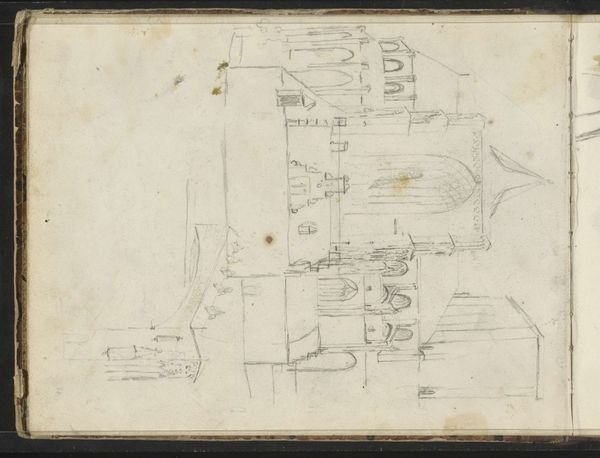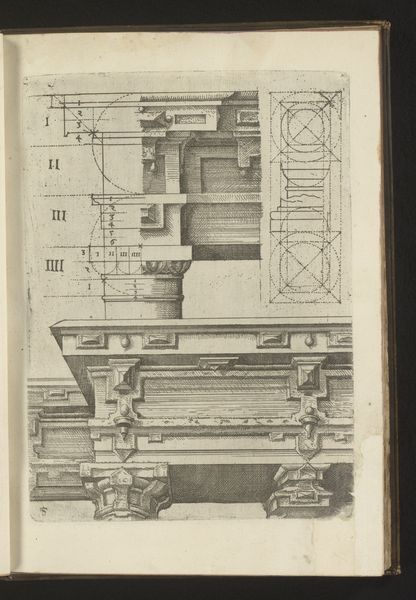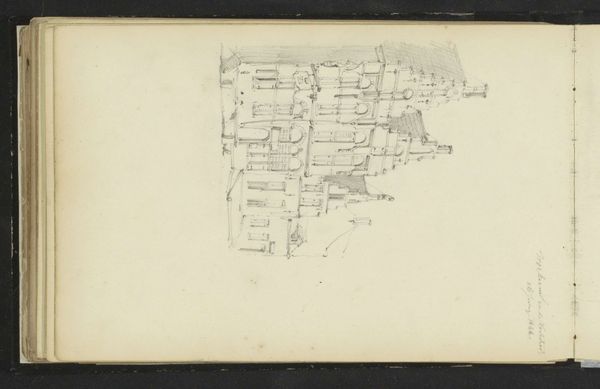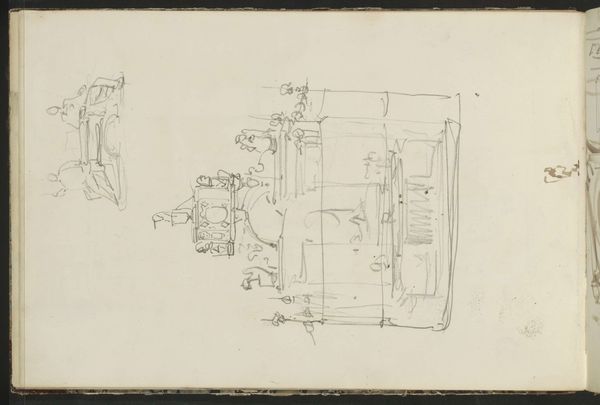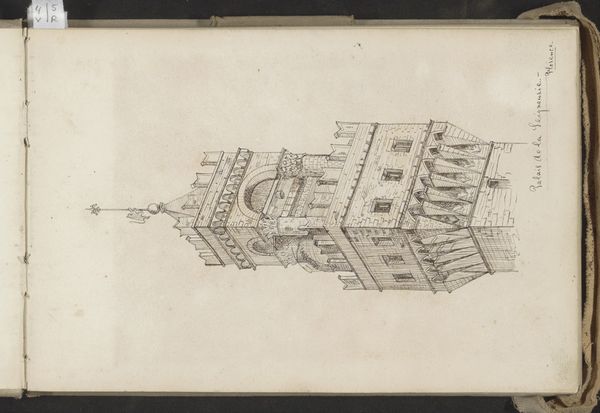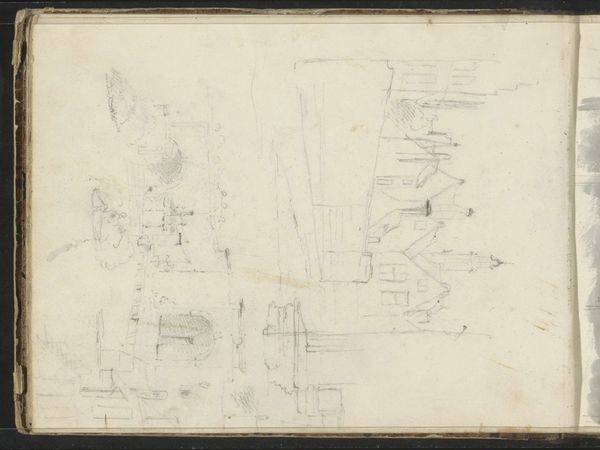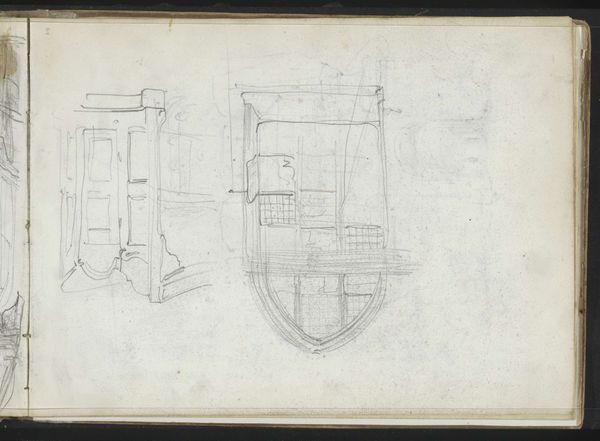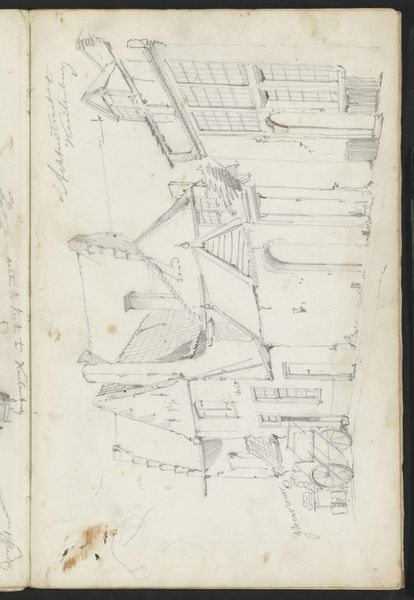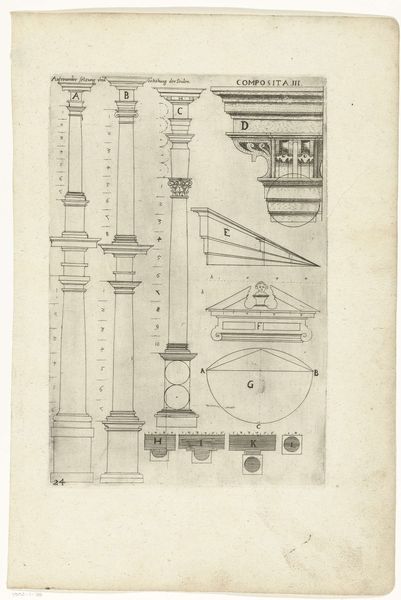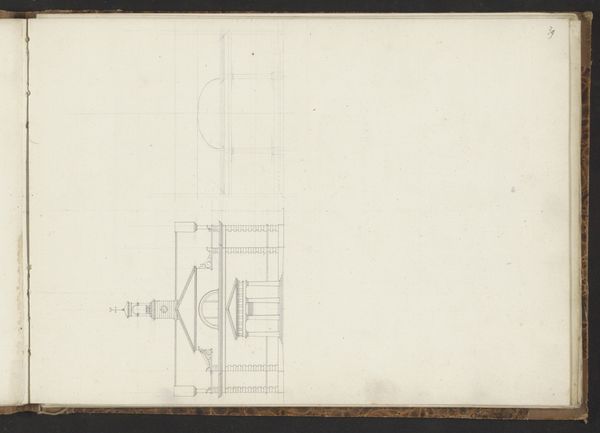
Gezicht op een gebouw aan de Nieuwezijds Voorburgwal te Amsterdam c. 1846 - 1882
0:00
0:00
#
aged paper
#
toned paper
#
homemade paper
#
sketch book
#
hand drawn type
#
personal sketchbook
#
hand-drawn typeface
#
fading type
#
sketchbook drawing
#
sketchbook art
#
building
Copyright: Rijks Museum: Open Domain
Curator: This is Cornelis Springer's "Gezicht op een gebouw aan de Nieuwezijds Voorburgwal te Amsterdam," a sketch likely dating between 1846 and 1882, part of a sketchbook now held in the Rijksmuseum. Editor: It's incredible how a simple pencil sketch on what looks like aged paper evokes so much detail and quietude. There is a stillness in the lined details. Curator: Indeed. As a study, its materiality offers insight. Look at the paper itself, likely homemade or at least deliberately toned. Its inherent qualities—the texture, its receptiveness to graphite—influenced Springer’s technique. It’s more than just a surface. It's the product of an economy and craft culture specific to its time, it speaks to the resources available and valued. Editor: Absolutely, and it's fascinating to think about that context. Nieuwezijds Voorburgwal, in that period, would have been evolving rapidly alongside Amsterdam's identity as a global trading hub. Springer's choice to capture this particular building—was it a warehouse, a merchant's home? That's where the social narratives emerge. How does it reflect Amsterdam’s social classes and economic systems? It gives one a new outlook on what this sketch represents. Curator: That perspective shapes our interpretation. Were materials carefully rationed? This economy reflects deeply entrenched social power structures of the era that supported this practice. Editor: The fading type and handwritten annotations around the building on the right side invite this sense of historical research. Was it meant to only to aid in making other sketches and paintings? Curator: Exactly. It brings an additional facet that blends high art with functional craft. The sketchbook's purpose within Springer's artistic labour also begs exploration of that line of inquiry. It isn't solely an aesthetic object; it served a very real function in the artist’s practice. Editor: True, which underscores the intertwined realities of urban development, artistic documentation, and social stratification back then. It gives depth to seeing the drawing beyond a picturesque façade. Curator: Considering the labour and materials involved gives greater substance to appreciating how these elements define artistic merit, going beyond purely aesthetic or representational qualities. Editor: It deepens one's perspective of the era itself and these sketches. Curator: Precisely.
Comments
No comments
Be the first to comment and join the conversation on the ultimate creative platform.
